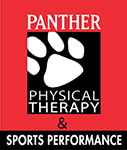
What Is Dry Needling?
Dry Needling, also referred to as trigger point dry needling (TDN) or Intramuscular Manual Therapy, is a therapeutic treatment technique utilizing fine filament needles to deactivate muscular trigger points. Trigger points are hyperirritable spots found within taut bands of muscle tissue, which can result in localized and referred pain, tenderness, sensitivity, and motor dysfunction. Trigger points can develop from injury, disease processes, and repetitive stress as occurs in sports or with postural strain. Through penetration of the needle into the trigger point, a localized twitch response (LTR) is elicited which results in a neuromuscular “resetting.”
How is This Different Than Acupuncture?
It is true that acupuncture and dry needling both utilize filament needles; however, their similarities stop there. Acupuncture is an Eastern based treatment technique that focuses on restoring the balance and flow of Qi (energy) in the body through pathways called meridians. The needles are traditionally inserted into the skin with minimal discomfort felt by the patient. Dry needling is a Western based technique as described above. The needles are inserted into dysfunctional muscle tissue and can feel much like a cramping sensation or twitch.
How Can it Help Me?
Dry needling is best used in conjunction with traditional physical therapy practices to promote the quick return of an individual back to a healthy, functional lifestyle. It has shown to be effective with acute and chronic pain states, rehabilitation from injury, and preventing pain and injury that result from dysfunctional movement patterns. Positive outcomes are generally seen within 2-4 treatment sessions but may vary depending on the cause and duration of the symptoms as well as the person’s overall health. Desired outcomes as perceived by the individual may include: improved muscle flexibility, decreased local or referred pain, decreased sensitivity, increased rate of healing, and decreased recurrence of injury.


 View Larger Map
View Larger Map